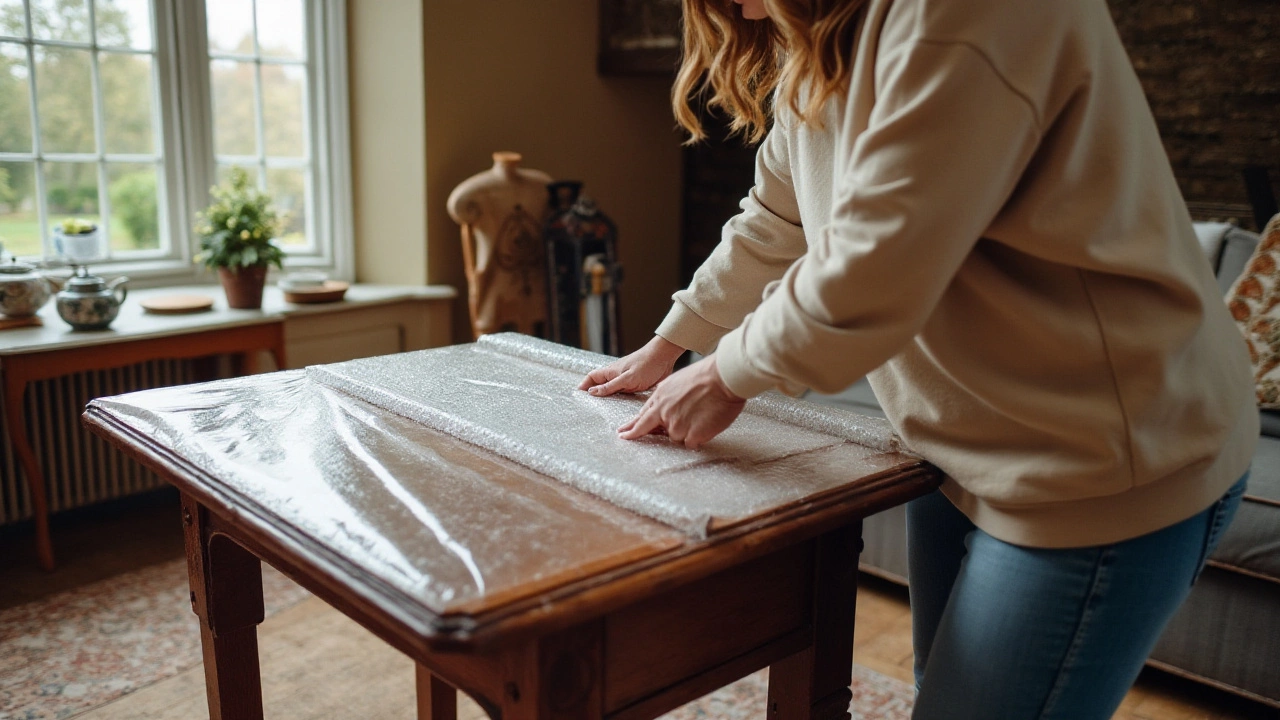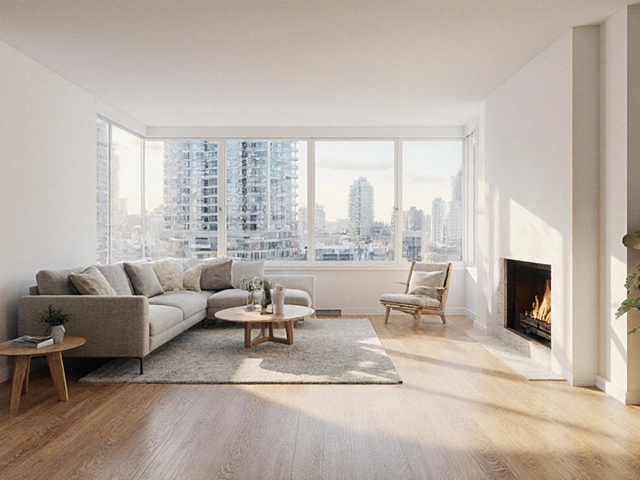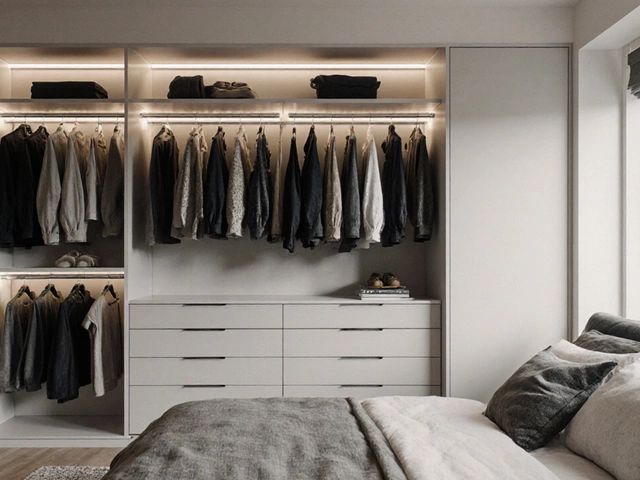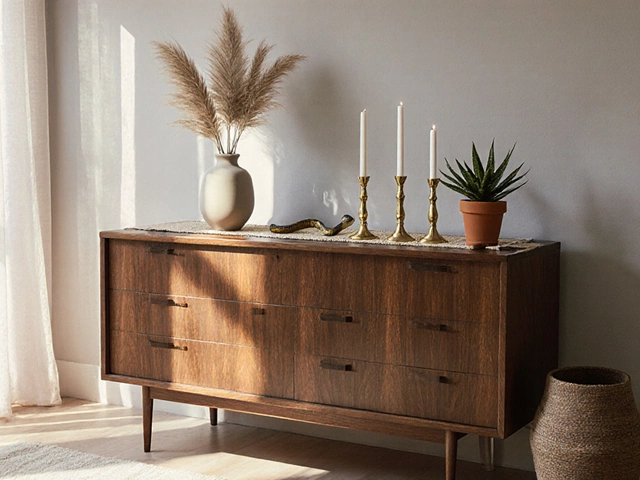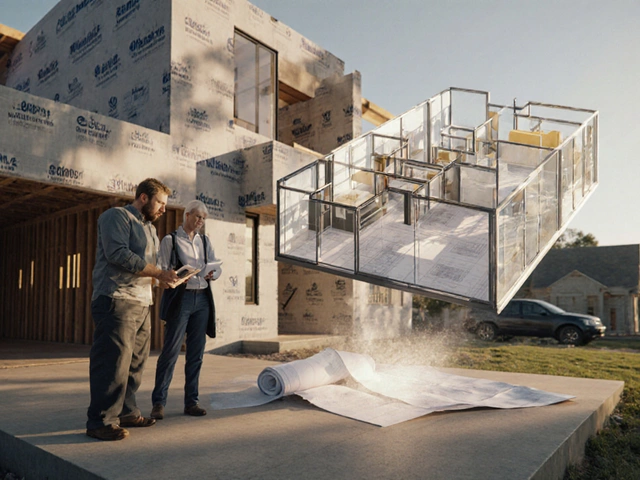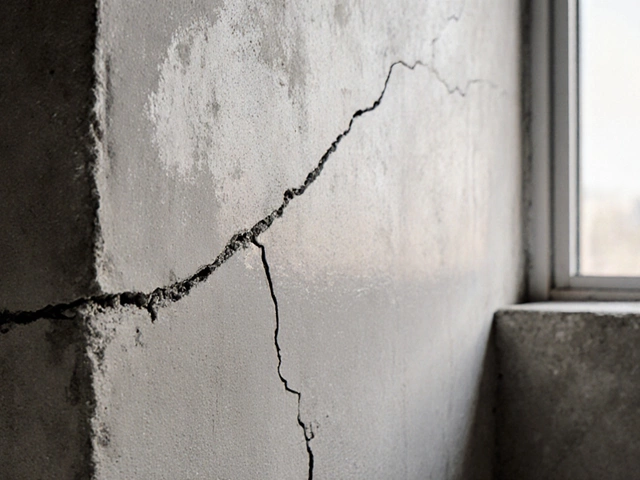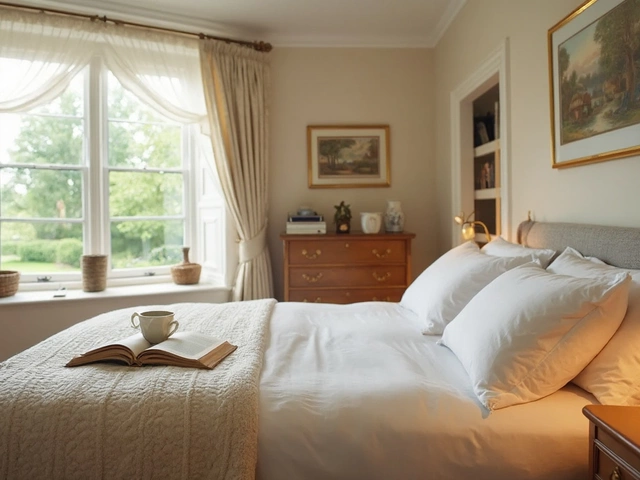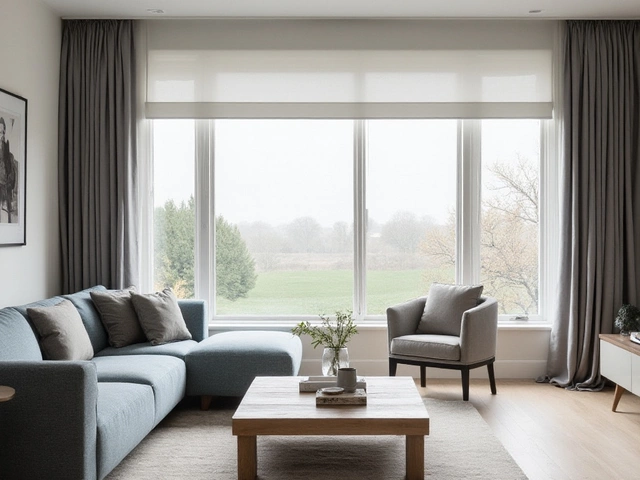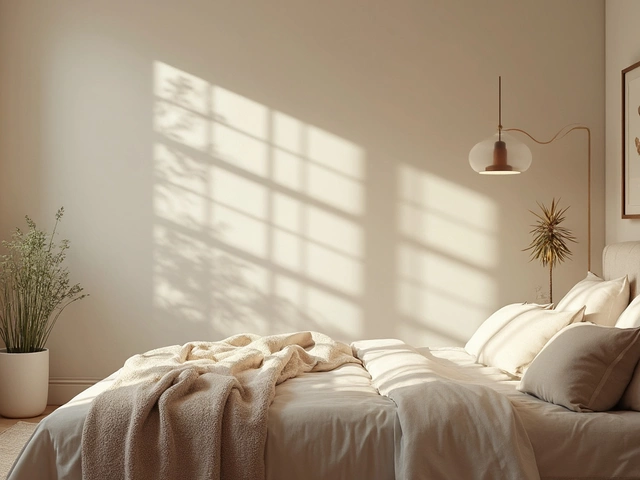Protecting furniture is vital whether you are moving across town or storing it for an extended period. Choosing the best wrapping material can prevent damage, keeping your beloved pieces in tip-top shape.
From sturdy blankets to specialized plastic wraps, the variety of materials available can feel overwhelming. Yet, each has unique advantages suited to specific needs and situations.
We'll explore some of the most popular options, examining what makes each beneficial in certain contexts. Whether it's guarding against scratches or moisture, the right wrapping choice can make all the difference. By understanding your options, you'll equip yourself to handle your furniture with the care it deserves.
- Importance of Furniture Wrapping
- Common Wrapping Materials
- Pros and Cons of Each Material
- Best Practices for Wrapping
- Environmental Considerations
- Tips for Long-Term Storage
Importance of Furniture Wrapping
In any situation involving a move or long-term storage, wrapping furniture is a step that should not be overlooked. The process is fundamental in preserving both the aesthetic and structural integrity of your pieces. Furniture, whether it's a family heirloom or a recent purchase, represents an investment that deserves protection from the myriad threats it may face during transport or time in storage. Scratches, dents, and other forms of damage can all lessen the value and visual appeal of your favorite items. Proper wrapping can help mitigate these risks significantly.
Moving companies often emphasize the importance of using protective materials to their clients, highlighting the role it plays in ensuring that furniture arrives at its destination in pristine condition. It's not just about aesthetics; unprotected surfaces are more susceptible to environmental damage, such as humidity and temperature fluctuations, which can lead to warping or cracking over time. Additionally, wrapped furniture pieces are less prone to shifting within moving trucks, reducing the likelihood of accidents.
Protective materials for wrapping furniture come in various forms, each intended to address specific challenges. For example, plastic wraps provide a shield against moisture and water damage, while furniture blankets offer excellent padding against physical impacts.
"Protecting your furniture with the right materials is not merely an option; it's a necessity," notes the American Moving & Storage Association, underscoring the critical nature of this practice.This sentiment captures the universal appreciation among professionals for strategic packing and wrapping in maintaining the quality of furniture pieces during transitions.
Using the right moving supplies ensures not only the safety of the furniture itself but also the safety of those handling it. Items that are properly secured require less maneuvering, which can decrease the physical strain required by movers. As such, it’s practical, cost-effective, and ensures peace of mind knowing that you have taken every precaution to protect your assets. By embracing these best practices in wrapping techniques, owners and movers safeguard against many common moving mishaps.
Common Wrapping Materials
When it comes to wrapping furniture, the type of material you choose can make a significant difference in the level of protection offered. Furniture wrapping might seem simple, but with the wide range of materials available, it’s vital to know the advantages each one brings. Perhaps the most widely used material is bubble wrap. Famous for its cushioning properties, bubble wrap is a favorite for protecting surfaces against impacts. It's ideal for smaller or fragile items like glass tabletops or delicate ornaments. The bubbles act as tiny shock absorbers, effectively minimizing the risk of damage during transit or handling. However, it’s essential to know that bubble wrap, with its plastic makeup, isn't the most environmentally friendly option, thereby highlighting the importance of recycling after use.
For those prioritizing both sustainability and protection, moving blankets or pads are excellent alternatives. These thick, quilted covers offer robust defense against dents and scratches. They are especially beneficial for larger items like couches and armoires, where coverage must span broad areas. Often used by professionals, moving blankets are reusable, making them an economically and environmentally sound choice. Another common material used is stretch wrap, typically composed of thin plastic film. Stretch wrap provides a tight seal, effectively keeping drawers and doors secured during transportation. It’s particularly useful as a second layer of protection when combined with blankets. A note of caution: ensure the surface of the furniture is clean before applying stretch wrap to avoid trapping dust or debris, which could cause abrasions.
Quilted covers provide substantial protection too. Designed to cover the item entirely, they secure with straps or ties. They're particularly efficient for storage purposes, offering a barrier against dust and minor scratches over time. A convenient aspect of quilted covers is their versatility; they can be used repeatedly, ensuring that their initial investment repays itself many times over. A lesser-known but effective alternative is paper padding, constructed from recycled paper material often laminated with a polyethylene backing. It offers decent protection against scratches and light bumps. However, it lacks the cushioning of bubble wrap and the coverage of blankets, making it best suited for lightweight and less fragile items.
According to the Boston Globe, "In the realm of sustainable living, choosing reusable resources like quilted covers marks a pivotal stride forward, reducing waste while ensuring effectiveness across countless moves."Understanding these materials and their applications can ensure your furniture remains in excellent condition, regardless of the challenges posed by moving or storage. Thoughtfully selecting the right wrapping material will provide peace of mind, preserving your cherished pieces for years to come. Consider, too, the growing movement towards eco-friendly products when possible, blending both efficacy and environmental responsibility.
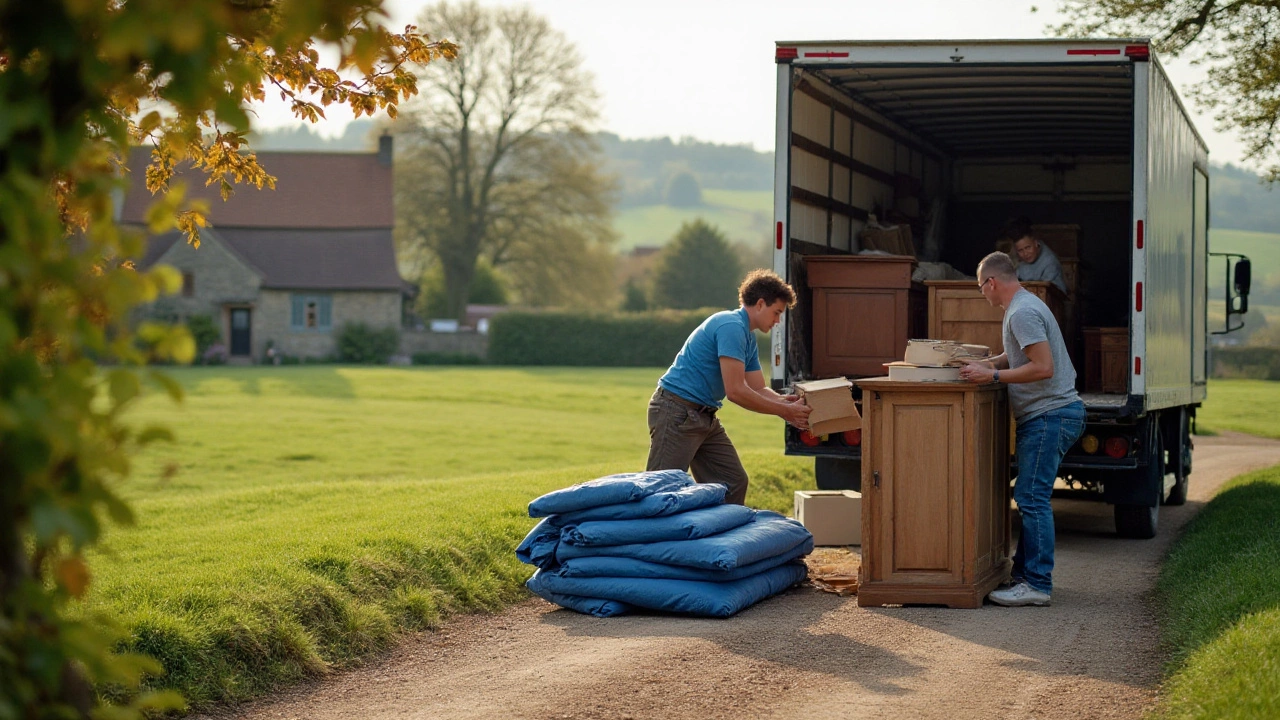
Pros and Cons of Each Material
When it comes to wrapping your prized furniture, understanding the unique characteristics of various wrapping materials is essential. Each option comes with its own set of advantages and potential drawbacks, making the choice highly dependent on your specific needs and circumstances. Let's delve into some of the most common materials used for furniture wrapping, providing a thorough look at what each brings to the table.
Bubble Wrap
Bubble wrap remains one of the most popular choices for wrapping furniture during transport or storage. Its lightweight nature makes it easy to handle, while the cushioned protection it offers is great for preventing scratches and minor dings. This material is particularly useful for delicate items with fragile surfaces or intricate designs. However, it does have its drawbacks. Bubble wrap is not ideal for protecting against moisture or significant impacts, as it is not completely impermeable. Sustainability concerns also arise, as bubble wrap is typically made from plastic, contributing to environmental waste if not properly recycled.
The use of bubble wrap has revolutionized packaging safety, but users must balance efficiency with ecological responsibility. — Professional Movers Journal
Furniture Pads and Moving Blankets
Furniture pads, often referred to as moving blankets, offer a robust option for safeguarding your larger, more solid pieces. These thick, quilted blankets provide excellent protection against impact, making them ideal for moving heavier furniture like tables, couches, and dressers. They’re reusable and can better cater to a sustainable approach compared to single-use plastics. Despite their benefits, furniture pads are often bulky, requiring more effort and skill to properly wrap and secure around each item. Additionally, they can be less efficient at protecting against moisture, so additional layers or precautions might be necessary when storing furniture in damp areas.
Plastic Wrap
When seeking a solution to secure items tightly, plastic wrap emerges as a highly versatile option. Its ability to cling firmly to furniture surfaces helps in keeping dust and dirt at bay. Plastic wrap is particularly favored for upholstered items, as it protects the fabric from stains and keeps cushions intact. Yet, one must be cautious with plastic wrap; it can trap moisture and lead to mold if used improperly, especially when long-term storage is involved. Employing this material effectively requires an understanding of when to allow air circulation to avert potential damage.
Cardboard
Using cardboard sheets or boxes as a wrapping technique isn't as common but still worth mentioning, especially for items requiring additional structural support. Cardboard provides a sturdy layer that can help in protecting flat surfaces like table tops or bookshelf panels during moves. However, cardboard has its limitations. It is not pliable, making it tough to use for furniture with intricate shapes. It also leaves items vulnerable to moisture and should be used with caution in environments where water damage is a concern. As a supplementary measure combined with other materials, cardboard can offer enhanced protection.
In summary, selecting the ideal wrapping material demands consideration of factors such as the material's durability, environmental impact, and appropriateness for the specific type of furniture. Knowing these details enhances your ability to safeguard your possessions effectively.
Best Practices for Wrapping
When it comes to wrapping furniture, proper technique can be just as critical as the material itself. The goal is to safeguard against physical damage, such as scratches or scuffs, and threats like moisture which can warp wood or stain fabrics. Begin by cleaning each piece thoroughly; dust and debris, if left on the surfaces, can lead to additional scratches when wrapped tightly. It's vital to dry the furniture completely after cleaning, as moisture trapped beneath wrapping can promote mildew or mold growth.
Before diving straight into wrapping, disassemble any furniture items that allow it. This practice not only reduces the item's footprint for storage but also makes each piece less cumbersome and more accessible for thorough wrapping. Keep track of any screws or tools needed for reassembly later and store them in a clearly labeled bag, attached to the furniture if possible. Always wrap individual parts such as table legs separately to avoid them scratching other pieces.
When applying the wrapping material, ensure it fits snugly but not too tight to avoid stress on the structure of your furniture over time. Softer materials like furniture blankets are perfect for layered protection. Start by wrapping the larger surface areas, then focus on the edges and corners with additional padding. In contrast, plastic wrap works excellently for items with cloth or cushy materials that could be prone to dust or spills in storage. Using plastic wrap requires a gentler approach; wrapping too tightly can hinder ventilation.
Make use of quality packing tape to secure all wrapped pieces. However, avoid placing the tape directly on painted or polished surfaces, as it could potentially damage finishes. Here, a simple trick is using a layer of packing paper between the tape and the furniture surface. Including silica gel packs within larger wrapped items can also absorb any excess moisture and add an extra layer of protection.
Labeling wrapped items, especially if they are headed to long-term storage, is a handy practice that ensures easy identification and retrieval. Use stickers or tags to note what each piece is inside its protective cocoon. This step can save you hours of sifting when it’s time to unpack.
"The best way to protect art is to preserve its surface from unnecessary contact," says conservation expert Susan Cleaver, a principle also applicable to household furniture, emphasizing the value of proper shielding techniques.
Whether you are storing furniture temporarily during renovations or preparing for a move, these best practices will help maintain the condition of your treasured belongings. Wrapping with precision and care can transform a labor-intensive task into a simple yet effective way to preserve your household investments. Remember, the time and effort put into proper wrapping will greatly pay off in the long run, ensuring that unpacking brings delight rather than dismay.
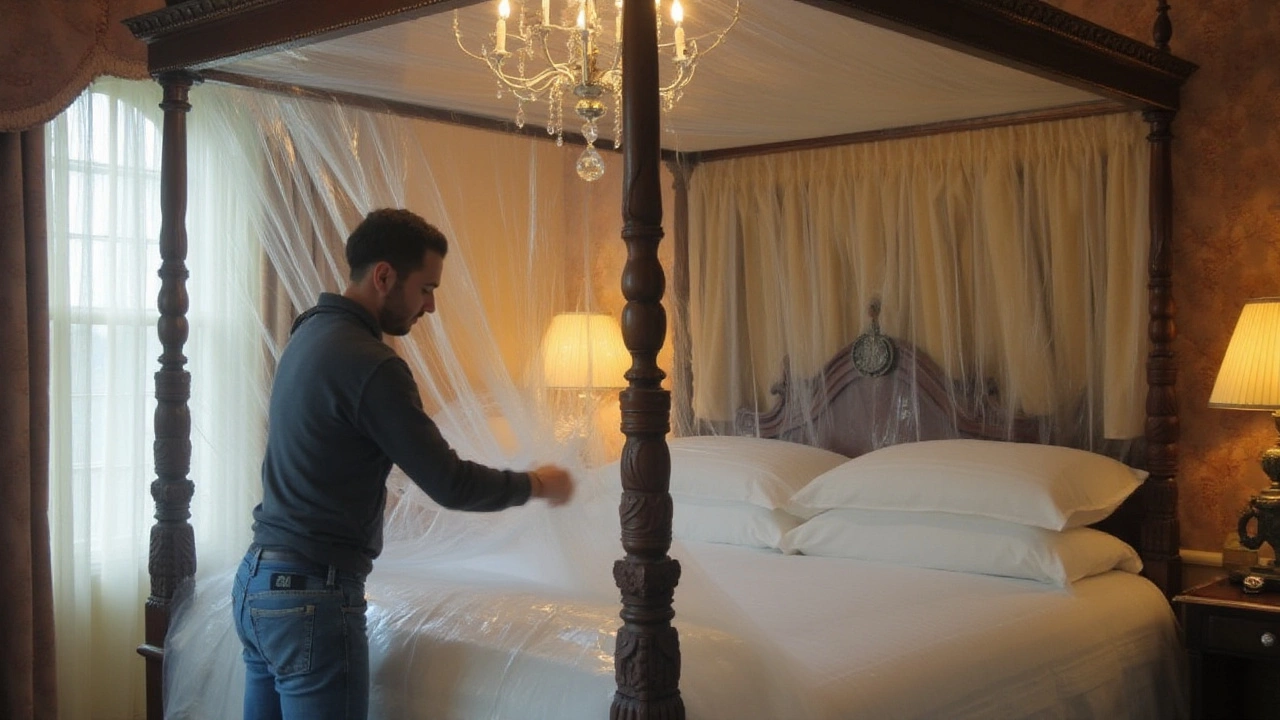
Environmental Considerations
When selecting wrapping materials for your furniture, it's not just the protection of your belongings that is at stake, but also the impact on the environment. Sustainability has become a key focus in many industries, and the same goes for the world of furniture wrapping. Many are beginning to question the environmental footprint left by traditional materials like plastic wraps and tape. Surprisingly, these common materials can take hundreds of years to decompose. The environmental implications are significant when considering the sheer volume of materials used annually by people moving or storing their items. Thus, reducing waste and opting for eco-friendlier alternatives is not only a matter of personal choice but also a necessity for the future.
Eco-friendly materials are gaining popularity, with biodegradable wraps slowly replacing conventional plastics. These alternatives are designed to break down naturally in the environment, leaving little to no trace. For example, bioplastics made from corn starch or sugarcane provide a similar protective barrier as regular plastic but decompose in just a few years. An often-overlooked option is using recycled materials for wrapping, which minimizes the need for new resources and often provides adequate protection. By reusing blankets or purchasing second-hand bubble wrap, individuals can extend the life cycle of these products.
Companies are also taking note, opting for more sustainable practices. Many moving suppliers now offer rental options for durable protective covers. After use, these wraps are returned, cleaned, and rented out again, creating a cycle that significantly reduces waste. People are becoming more conscientious about the planet and are seeking companies that reflect their values. In fact, according to a 2023 survey, 75% of consumers reported a preference for companies that use sustainable practices over those that do not. This shift in consumer behavior illustrates growing awareness and concern for our planet.
Individuals can do their part by being mindful of their choices. Using alternatives such as recycled cardboard, reusable blankets, or fabric wraps can lessen environmental impact and provide adequate protection for furniture. There is a growing trend towards zero-waste, which encourages people to innovate and seek creative solutions. For example, old sheets or linens can easily be upcycled as a protective layer during a move. Not only does this approach save money, but it reduces the dependency on single-use plastics.
In summary, incorporating environmental considerations into your choice of furniture wrapping materials is essential for long-term sustainability. The decisions we make today about how we safeguard our belongings have larger implications beyond our immediate needs. They contribute to a collective effort to care for our planet, an effort that benefits all of us in the end. As awareness grows, both individuals and companies are stepping up to the challenge, demonstrating that it is indeed possible to protect our furniture and the environment simultaneously.
Tips for Long-Term Storage
When preparing your cherished furniture for long-term storage, each step you take is key to preserving its condition over time. Start by choosing the right location, as a clean, dry space provides the best environment for preventing decay and disrepair. Some may opt for climate-controlled units, essential for more sensitive pieces that can warp or crack under fluctuating temperatures. Remember, your choice of storage location significantly impacts the longevity of your furniture.
Before wrapping those treasured items, take the time to clean each piece thoroughly. Even small traces of dust or grime left on surfaces can lead to staining or degradation when trapped under the wrap over months or years. Apply appropriate polishes or waxes to wooden surfaces, allowing them to retain moisture and remain supple. This detail, though minute, will make a difference in maintaining the beauty and structure of your pieces.
Once cleaned, choosing the right furniture wrapping materials is vital. Consider materials such as breathable fabric wraps or blankets, which allow air to circulate, preventing mildew or moisture buildup. Plastic wraps, though effective against water, can trap moisture against the surface, leading to mold. In situations demanding additional protection, combining different materials, like wrapping with cloth before a layer of plastic, might offer superior security.
Proper placement within the storage area should not be underestimated. Arrange the furniture with care, ensuring items are slightly elevated to safeguard against unexpected dampness. Keeping furniture off the floor using pallets or other structures not only facilitates airflow but also mitigates accidental water damage from leaks. Give each item enough space to breathe rather than cramming them together, which can lead to scratches and unwanted pressure marks.
"Quality remains long after the price is forgotten," once noted Sir Henry Royce, which rings true when thinking about protecting your valuable assets over time.
Inventory is your friend. Maintain a detailed list of all stored items, including photographs for documentation. This not only provides peace of mind but also assists in managing the space efficiently. Should insurance concerns arise, having a comprehensive catalog ensures smoother claim processes. Additionally, attempt regular check-ins if feasible, inspecting both inventory and the storage environment for needed adjustments or preemptive actions.
Long-term care doesn't stop at leaving your items in storage. Periodically, check your furniture, airing it out when necessary to avoid the build-up of musky smells or unseen mold. Refresh protective covers and inspect for signs of insect activity or structural changes. By diligently following these storage tips, you preserve not just furniture but also the stories and comfort each piece offers within your home.
